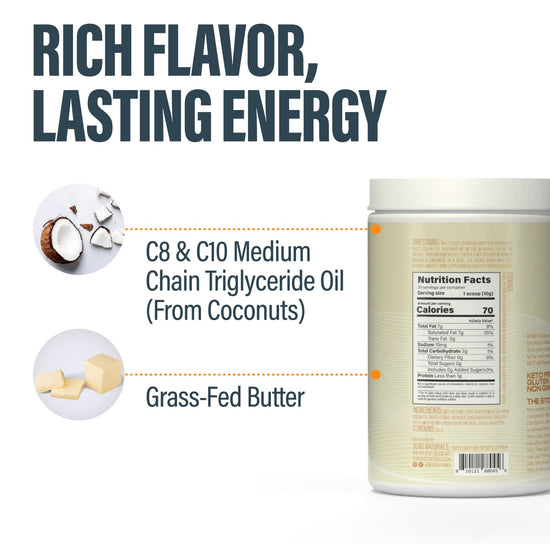Table of Contents
- Introduction
- Understanding Coffee Creamer
- Using Coffee Creamer in Beverages
- Cooking and Baking with Coffee Creamer
- Tips for Successful Substitution
- Conclusion
- FAQ
Introduction
In a world driven by innovative culinary choices, many of us find ourselves seeking alternatives to traditional ingredients. One such alternative that has gained popularity is coffee creamer, a versatile product originally designed to enhance our morning brew. But what if we told you that this creamy concoction could do more than just lighten your coffee? Can it really substitute milk in various recipes? The answer is a resounding yes!
Historically, coffee creamer has been favored for its ability to provide a rich, creamy texture without the lactose found in traditional dairy products. This makes it a go-to option for those who are lactose intolerant or simply prefer a sweeter flavor profile. As we dive into the myriad ways to use coffee creamer instead of milk, we’ll explore its benefits, various types, and practical applications—from coffee and tea to baking and cooking.
By the end of this post, you’ll not only learn how to effectively incorporate coffee creamer into your daily routine but also discover the unique advantages it offers over traditional milk. We’ll guide you through practical tips, flavor pairings, and even some creative recipes to elevate your kitchen game.
Join us as we navigate this creamy territory, uncovering the nuances of using coffee creamer in place of milk. Whether you're looking to enhance your morning cup or whip up something delicious in the kitchen, we’ve got you covered!
Understanding Coffee Creamer
Before we delve into the how-to's, let's understand what coffee creamer is and why it can be a fantastic substitute for milk.
What is Coffee Creamer?
Coffee creamer, also known as coffee whitener, comes in various forms, including liquid, powdered, and non-dairy options. Each type serves the same primary purpose: to add creaminess to coffee, but they also bring unique benefits to the table.
-
Liquid Creamers: These often contain a blend of milk, sugar, and artificial flavors. They can be found in both refrigerated and shelf-stable varieties.
-
Powdered Creamers: These dehydrated options are easy to store and last longer, making them a convenient choice for many. They typically contain hydrogenated oils and sugar.
-
Non-Dairy Creamers: Made from vegetable oils or nut extracts, these are perfect for those avoiding dairy altogether. Flavors can range from vanilla to hazelnut, adding an extra layer of taste.
Each type of coffee creamer has its own unique characteristics that can enhance flavor profiles and textures in recipes.
Why Substitute Coffee Creamer for Milk?
Using coffee creamer instead of milk can be beneficial for several reasons:
- Lactose-Free: Perfect for those who are lactose intolerant.
- Flavorful: Many creamers come in delicious flavors that can add an unexpected twist to your beverages and dishes.
- Shelf Stable: Powdered and some liquid creamers can last longer than traditional milk, making them a convenient pantry staple.
- Versatile: Can be used in various recipes beyond just coffee, including baking, soups, and sauces.
With these benefits in mind, let’s explore how we can effectively use coffee creamers in place of milk in different contexts.
Using Coffee Creamer in Beverages
Coffee
One of the most common uses for coffee creamer is, of course, in coffee. Here’s how to achieve the perfect cup:
-
Measure Your Creamer: A good rule of thumb is to start with 2 tablespoons of liquid coffee creamer for every cup of coffee. Adjust based on your taste preference.
-
Pour Slowly: Add the creamer while stirring your coffee to ensure it mixes well. This prevents any separation or curdling, especially if you're using flavored or powdered creamers.
-
Sweetening: If you like your coffee sweeter, add sugar or sweetener after incorporating the creamer. This way, you can better gauge the sweetness of your brew.
Tea
Coffee creamer can also be a delightful addition to tea, particularly in chai lattes or sweet iced teas. Here’s how:
- Adding Creamer: For a creamy tea, add 1-2 teaspoons of powdered creamer or a splash of liquid creamer after steeping your tea. Stir gently to combine.
- Flavor Consideration: Choose flavored creamers that complement your tea selection. Vanilla or hazelnut creamers pair wonderfully with black tea.
Cooking and Baking with Coffee Creamer
Coffee creamer isn't limited to beverages; it can also be a game-changer in the kitchen. Here are some ways to integrate it into your cooking and baking:
Soups and Sauces
-
Creamy Soups: Substitute heavy cream with an unflavored coffee creamer to create a creamy texture in your soups. Simply swirl it in before serving, or mix it into the soup while cooking.
-
Pasta Sauces: Use coffee creamer to make your pasta sauces richer. Combine it with tomato sauce or cheese sauces for added creaminess.
Baking
Coffee creamer can enhance baked goods in several ways:
-
Replacing Milk: Use coffee creamer in place of milk in your baking recipes. For instance, when making pancakes, replace the milk with the same amount of creamer to add flavor and richness.
-
Flavoring Baked Goods: Opt for flavored creamers in cakes or muffins to introduce unique tastes. Vanilla or caramel creamers can elevate a simple vanilla cake.
Creative Recipes
Let’s get creative! Here are a couple of recipes that showcase the versatility of coffee creamer:
Coffee Creamer French Toast
Ingredients:
- 6 thick slices of bread
- 3 eggs, beaten
- ½ cup coffee creamer (your favorite flavor)
- 2 tablespoons brown sugar
Instructions:
- Whisk together eggs, coffee creamer, and brown sugar in a large bowl.
- Dip each slice of bread into the mixture, ensuring both sides are coated.
- Cook on a greased skillet over medium heat until golden brown. Serve with syrup or fresh fruit.
Creamy Mashed Potatoes
Ingredients:
- 2 pounds potatoes, peeled and cubed
- ½ cup coffee creamer
- 2 tablespoons butter
- Salt and pepper to taste
Instructions:
- Boil potatoes until tender, then drain.
- In a bowl, mash the potatoes with coffee creamer and butter until creamy. Season with salt and pepper to taste.
Tips for Successful Substitution
Using coffee creamer in place of milk can be straightforward, but here are some tips for achieving the best results:
-
Start Small: When experimenting, start with smaller quantities of creamer and gradually add more to reach your desired flavor and creaminess.
-
Match Flavors: Consider the flavors of your creamer and how they will interact with the dish or beverage. For example, a hazelnut creamer pairs well with certain desserts, while vanilla works with most recipes.
-
Check for Freshness: Ensure that your coffee creamer is fresh and stored properly. Liquid creamers should be kept refrigerated and consumed within 7-10 days after opening.
Conclusion
Coffee creamer is not just a simple addition to your coffee; it’s a versatile ingredient that can enhance various dishes and beverages. From enriching your morning brew to transforming soups and baked goods, the possibilities are endless. With its lactose-free properties, delightful flavors, and ease of use, coffee creamer offers a fantastic alternative to traditional milk.
As you explore the culinary uses of coffee creamer, we encourage you to experiment with different flavors and applications. Whether you’re a seasoned chef or a kitchen novice, incorporating coffee creamer can add a new dimension to your cooking.
So, the next time you reach for that carton of milk, consider grabbing a bottle of coffee creamer instead. Embrace the adventure of flavor, and let your creativity flow in the kitchen!
FAQ
Q: Can I use powdered coffee creamer for cooking and baking?
A: Absolutely! Powdered coffee creamer can be used in cooking and baking, though you may need to reconstitute it with water for certain recipes.
Q: How does coffee creamer compare to milk in terms of calories?
A: Coffee creamers can vary widely in caloric content depending on the brand and type. Generally, flavored creamers may contain more calories and sugars than regular milk.
Q: Is there a difference in taste when using coffee creamer instead of milk?
A: Yes, coffee creamer can impart a sweeter, richer flavor compared to regular milk, especially when using flavored varieties.
Q: Can I use coffee creamer in tea?
A: Yes! Coffee creamer can be added to tea, particularly black teas or chai, for a creamy texture and enhanced flavor.
Q: How long does coffee creamer last after opening?
A: Once opened, liquid coffee creamers typically last about 7-10 days when refrigerated. Check the expiration date for powdered varieties, as they can last much longer if stored properly.
By embracing coffee creamer as a milk substitute, we can enhance our culinary experiences while honoring the spirit of adventure and creativity in the kitchen. At BUBS Naturals, we believe in living life to the fullest and making every moment delicious! So, why not explore the world of coffee creamers and discover the delightful possibilities they offer?
Written by:
Bubs Naturals

Butter MCT Oil Creamer
BUBS Butter MCT Oil Creamer (formerly Halo Creamer): Scientifically-Backed Brain and Body Fuel
BUBS Butter MCT Oil Creamer is your go-to for clean, fast-acting energy and focus, no crash included. It blends creamy grass-fed butter with fast-acting MCT oil powder (C8 and C10) to kickstart your day and keep you sharp. The MCTs go straight to work, giving your brain a quick boost while the grass-fed butter supports digestion and gut health.
Together, they help curb cravings, keep you feeling full longer, and support steady energy throughout the day—perfect for fueling your mornings or powering through the afternoon slump.
Starts at $37.00
Shop

